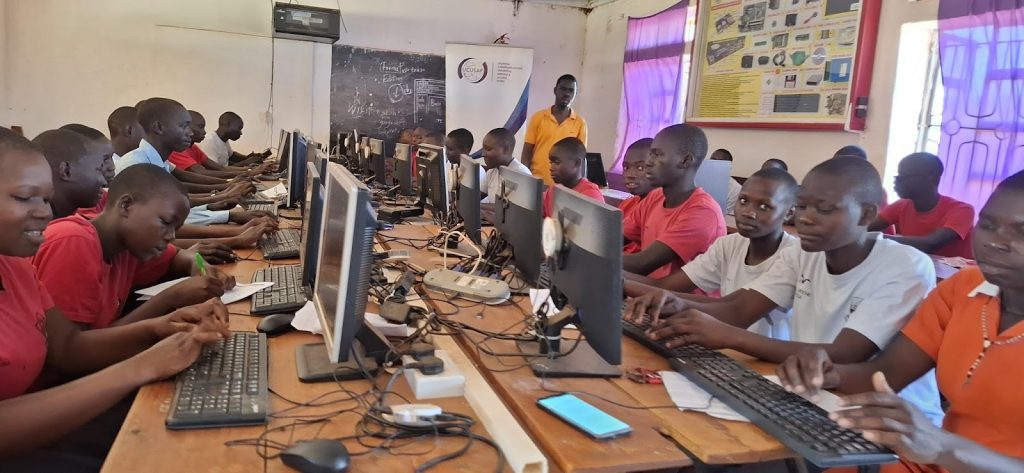Understanding AI Models – How They Learn and Make Predictions

When we talk about Artificial Intelligence, the AI model is the “brain” behind the system. It is the part of AI that processes data, learns from it, and makes predictions or decisions. Just like students in school learn by reading books, practicing exercises, and getting feedback, AI models also learn from data. For ICT Club members, understanding how AI models work is important because it shows us why AI sometimes makes mistakes, why it can be powerful, and how we can design better and fairer systems for Uganda’s future.
1) What is an AI Model?
An AI model is a mathematical and computational structure that mimics how humans learn and recognize patterns. It is built to take in information (data), process it, and give an output (prediction, classification, or decision). For example, an AI model trained on medical images can predict whether an X-ray shows signs of pneumonia. Another model trained on student essays can suggest improvements in grammar.
AI models are like “recipes.” Each model follows certain steps (algorithms) to turn raw data into useful results. Just as two cooks following different recipes may prepare the same dish in different ways, two AI models may solve the same problem differently depending on their design.
Local Example: Imagine training an AI model in Uganda to recognize local crops. The data could be thousands of pictures of maize, matooke, cassava, and beans. Once trained, the model could help farmers quickly identify crop diseases from photos taken with their phones.
2) How Do AI Models Learn?
AI models learn by finding patterns in data. The process is usually broken down into three steps:
- Training: The model is shown lots of examples. For instance, if we are teaching it to recognize cats, we give it thousands of cat and non-cat pictures. Each picture comes with a label (“cat” or “not cat”).
- Testing: After training, we test the model with new pictures it has never seen before to check if it can correctly identify cats.
- Improvement: If the model makes mistakes, engineers adjust it by fine-tuning the algorithm, adding more data, or correcting errors.
This process is very similar to how students learn. A student revises notes (training), answers exam questions (testing), and reviews mistakes with the teacher (improvement).
Practical Activity for ICT Clubs: Use Google’s Teachable Machine. Upload pictures of, say, a chalkboard vs. a smartphone. Train the model to recognize them. Then show it a new picture and see if it predicts correctly. Students will immediately see how models “learn” and why more data leads to better accuracy.
3) Types of AI Models
There are different kinds of AI models, each suited for specific tasks.
- Decision Trees: Simple models that make decisions by following rules (like a flowchart). Example: An app that recommends whether to carry an umbrella based on weather forecasts.
- Neural Networks: Complex models inspired by the human brain. They use “layers” of connected nodes to process information. Example: Face recognition in smartphones.
- Large Language Models (LLMs): Advanced AI models trained on massive amounts of text to understand and generate human-like language. Examples include ChatGPT or Google’s Gemini. These are useful for answering questions, summarizing content, or even creating essays.
Ugandan Example: A decision tree model could be used by schools to predict whether a student might need extra support in mathematics based on their test results, attendance, and participation. Meanwhile, an LLM could help teachers prepare lesson notes in both English and Luganda.
4) How Do AI Models Make Predictions?
Once trained, AI models apply what they have learned to new data. If a model has learned the patterns of crop diseases, when given a new photo, it will compare the new image to its learned patterns and predict the disease. This prediction is not magic; it is based on probability. The model looks for similarities in patterns and gives the most likely answer.
However, predictions are only as good as the data the model has seen. If a Ugandan crop model was only trained on cassava grown in Kenya, it might misclassify cassava diseases common in Uganda. This is why local data is so important—it ensures the model reflects the real environment of Ugandan users.
Reflection Question for ICT Clubs: If an AI model trained in Europe struggles to recognize Ugandan faces or accents, what does that tell us about the importance of collecting local African data for AI development?
5) Why Should Students Care About AI Models?
Understanding AI models is more than just technology—it is about empowerment. Students who learn how AI models work can create tools that solve Ugandan problems. For instance, a student project could build a simple model that helps classify waste into biodegradable and non-biodegradable categories, promoting environmental sustainability.
Moreover, AI literacy helps protect society from risks. If students understand that models can be biased or make errors, they can ask critical questions about fairness, privacy, and inclusivity. They will be better positioned to become responsible AI citizens and future innovators.
AI models are the engines behind modern artificial intelligence. They are trained to recognize patterns in data and make predictions that affect real-life decisions—from healthcare and education to agriculture and finance. For Uganda’s ICT Clubs, the lesson is clear: by learning how AI models work, students will not only use AI tools but also start creating their own. This knowledge is the foundation for Uganda’s participation in the global AI movement, ensuring we move from being consumers to active co-creators of AI solutions.






